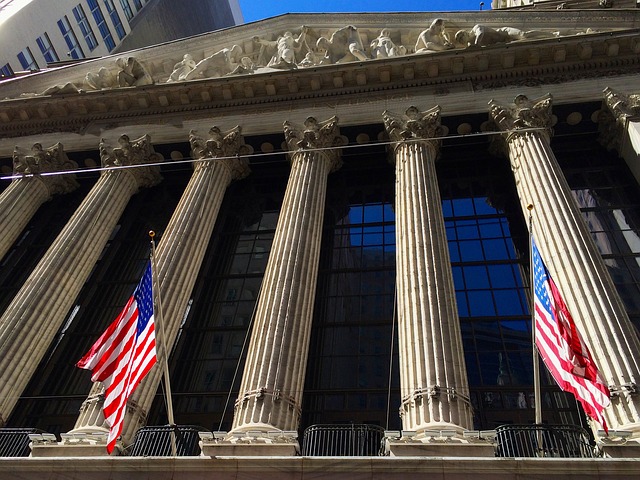Portfolio Manager explains why US banks have struggled, where opportunities might appear, and how investors can benefit from short-term volatility.

By James Learmonth, Senior Portfolio Manager, Harvest ETFs
(Sponsor Content)
The US banking sector is facing uncertainty. In the wake of the collapse of Silicon Valley Bank in March of 2023 — and deposit liquidity issues at other regional banks — the whole US banking sector has suffered some significant stock market setbacks.
In those setbacks, however, investors may see opportunities, especially when we consider the scale and importance of the US banking sector. Of the 30 banks included in the global list of systemically important financial institutions, colloquially referred to as “too big to fail,” eight are based in the United States.
With those titans as ballast, investors may be able to find growth opportunities in US banking, if they understand why the sector is struggling now, where the upside could come from, and find a strategy suited to short-term volatility.
For someone seeking to take advantage of the dislocation we’ve seen in the US banking sector, a diversified approach is absolutely something you may want to look at. Adding a covered call strategy would give the opportunity to monetize the high volatility we’re seeing on the market now. It’s hard to say when the upside might come in US banks given all this uncertainty. But, there’s an argument to be made for someone who wants exposure to these US banks that a covered call strategy could make sense.
Struggles and risks in US banking today
The US banks’ stock market setbacks are due in part to a fear reaction from bank-specific failings at institutions like Silicon Valley Bank, but also reflect some structural headwinds for the sector.
The systemic issue comes down to deposit costs. As market-based interest rates rose sharply in 2022 and into 2023, the rates offered by banks to their depositors remained relatively low. Depositors, especially larger businesses, have begun to demand higher interest rates on their accounts, raising the cost of funding for many banks. Some of those depositors started transitioning some capital into other interest-bearing vehicles, such as money market mutual funds, which offered a higher interest rate as well. The whole banking sector is now facing some challenges to profitability growth due to the rising costs of deposits.
Those deposit costs can be more accurately described as a structural headwind, rather than an existential risk. While deposit costs contributed to the fall of Silicon Valley Bank, it’s notable that a range of company-specific factors played a role: Silicon Valley Bank’s high proportion of business clients, meaning its depositor base was concentrated and held high average account balances. When word spread across social media of venture capitalists sounding alarm bells to their investment companies, withdrawals cascaded.
Other smaller regional US banks have faced similar issues recently, without collapsing entirely. But the fear of a contagion spreading, as well as the deposit cost headwind, has resulted in some market weakness for the sector. So, given that outlook, where can investors find opportunity in US banks?
A recovery and volatility strategy
The likely upside in US banking will be the result of recovery as panic around the bank sector abates. The structural headwind of rising deposit costs may keep banks from their previous growth trajectories in the medium term, but as we get more clarity on risks to the sector and the position of the most structurally significant institutions, we could see many US bank stocks recover some of their recent losses.
It’s notable, as well, that the major shocks have come from smaller regional banks in the US. Structurally significant US banks haven’t necessarily shown weakness, and may be attracting more deposit flows from smaller regional banks as depositors hedge against possible contagion.
We believe a combination of diversification and covered call strategies could help investors who want to access the potential recovery and upside in the US banking sector, while monetizing the sector’s short-term volatility.
The Harvest US Bank Leaders Income ETF holds an equal-weight portfolio of 16 of the largest US banks and financial institutions. That includes those structurally significant banks, but also includes exposure to smaller US regionals that could be positioned for greater recovery if we get more certainty about the sector. I would note that since the Silicon Valley Bank news broke, our team has had to write call options on a far smaller percentage of the ETF’s holdings, allowing more of the ETF to capture upside should it arise while also generating a high income yield. That yield could offset losses, and help investors weather short-term volatility while remaining exposed to possible upside in US banking.
If we do get some stability here, that could be a source of upside potential. We’ve also got the active covered call strategy in HUBL. So we have that ability to take advantage of higher implied volatility and generate some additional premiums.
 James Learmonth is a Senior Portfolio Manager for Harvest ETFs. He is responsible for Harvest’s Information Technology, US Financials, and Global Brand Leaders ETFs and is a 20+ year veteran of the financial services industry.
James Learmonth is a Senior Portfolio Manager for Harvest ETFs. He is responsible for Harvest’s Information Technology, US Financials, and Global Brand Leaders ETFs and is a 20+ year veteran of the financial services industry.
Learn more about Harvest ETFs here: https://harvestportfolios.com/
Follow Harvest ETFs on Social Media:

